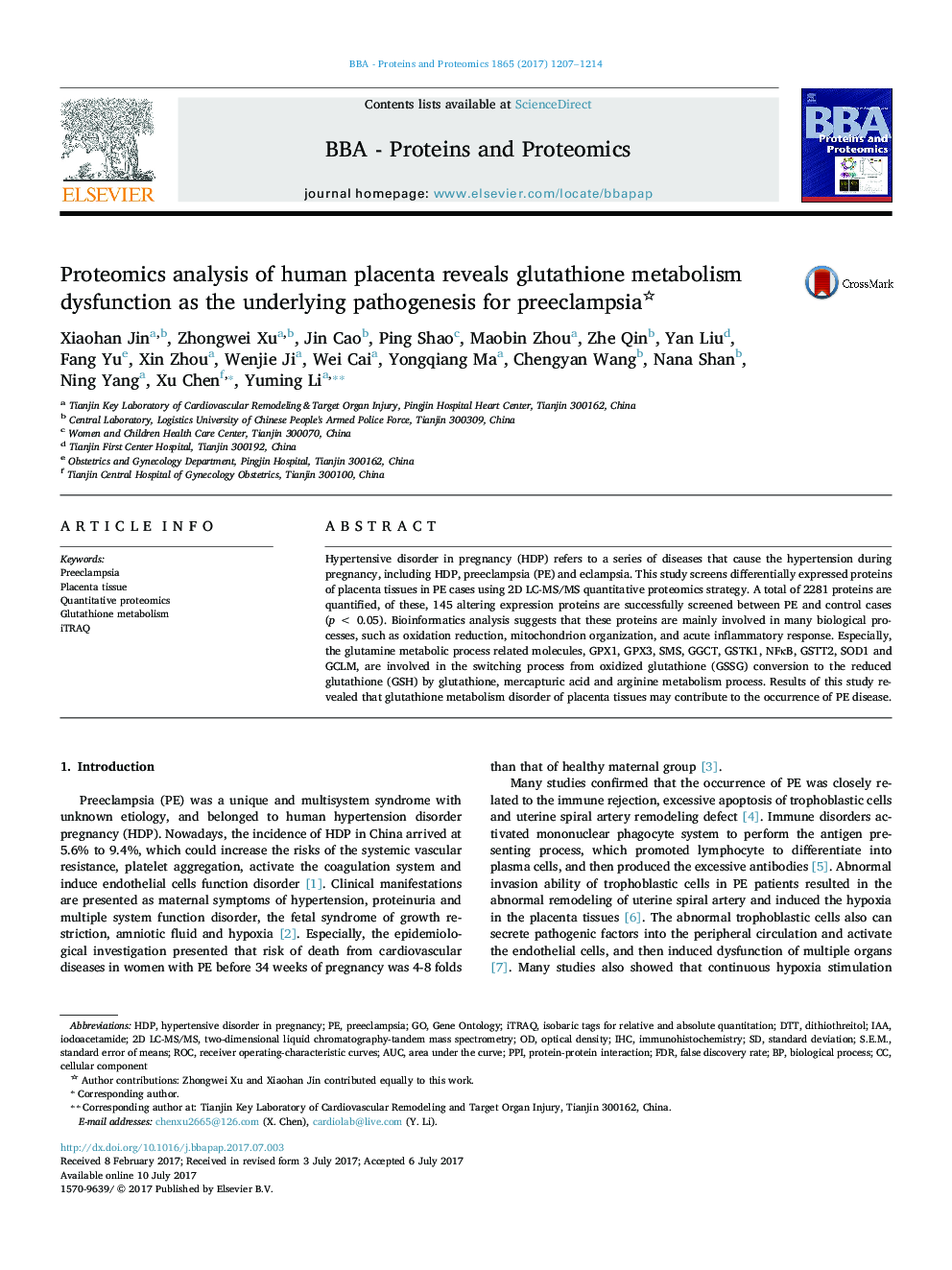| Article ID | Journal | Published Year | Pages | File Type |
|---|---|---|---|---|
| 5131922 | Biochimica et Biophysica Acta (BBA) - Proteins and Proteomics | 2017 | 8 Pages |
â¢MS analysis of difference expression proteins between placenta tissues of PE and normal cases.â¢Glutathione metabolism disorder may contribute to the occurrence of PE disease.â¢Decreased GSH and increased GSSG levels contribute to the development of preeclampsia.
Hypertensive disorder in pregnancy (HDP) refers to a series of diseases that cause the hypertension during pregnancy, including HDP, preeclampsia (PE) and eclampsia. This study screens differentially expressed proteins of placenta tissues in PE cases using 2D LC-MS/MS quantitative proteomics strategy. A total of 2281 proteins are quantified, of these, 145 altering expression proteins are successfully screened between PE and control cases (p < 0.05). Bioinformatics analysis suggests that these proteins are mainly involved in many biological processes, such as oxidation reduction, mitochondrion organization, and acute inflammatory response. Especially, the glutamine metabolic process related molecules, GPX1, GPX3, SMS, GGCT, GSTK1, NFκB, GSTT2, SOD1 and GCLM, are involved in the switching process from oxidized glutathione (GSSG) conversion to the reduced glutathione (GSH) by glutathione, mercapturic acid and arginine metabolism process. Results of this study revealed that glutathione metabolism disorder of placenta tissues may contribute to the occurrence of PE disease.
Graphical abstractProteomics analysis of human placenta reveals glutathione metabolism dysfunction as the underlying pathogenesis for preeclampsiaDownload high-res image (138KB)Download full-size image
